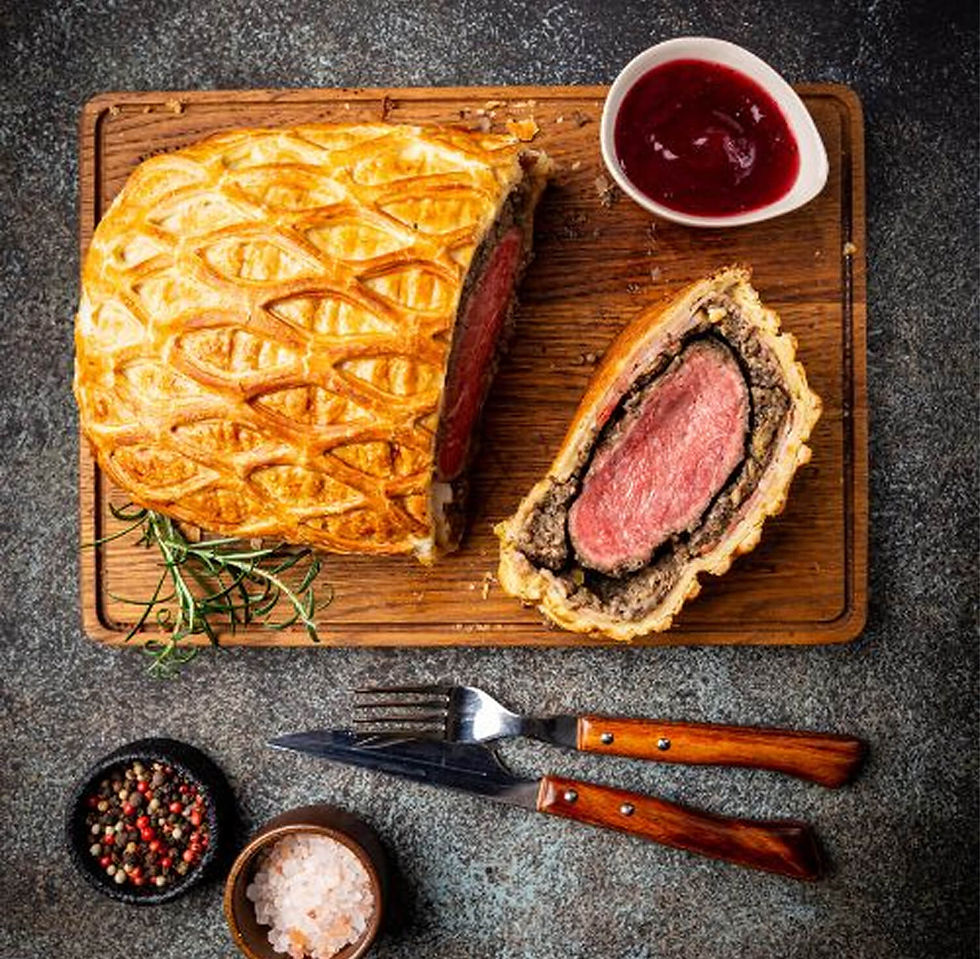Spring into spring with Pasta Primavera— Healthy, Easy, Affordable, and Delicious.
- Carol Ann Kates

- May 3, 2024
- 3 min read

Pasta Primavera
Serves 4

It’s springtime—the perfect time to make pasta primavera. In Italian alla primavera means “spring style”. Pasta primavera is named for spring, and most recipes for this tasty dish incorporate the first vegetables of spring, which are typically asparagus, peas, spring onions, and broad beans. I love making Pasta Primavera. My recipe leaves out the onions but includes cherry tomatoes and zucchini. Some recipes even add broccoli.
Pasta Primavera is an affordable meal to prepare for your family. All the ingredients for this recipe totaled $18.29 or $4.57 a serving, excluding the olive oil which is a pantry staple. You don’t have to follow the recipe exactly. Substitute any veggie with one of your family’s favorites. Some recipes for Pasta Primavera sauté the veggies, some blanche them. I love roasted vegetables, so that is the cooking method I use. If you choose to use different veggies, the roasting time will not change.
INGREDIENTS
1 zucchini, sliced into ¼-inch slices
1 red bell pepper, cored, seeded, and cut into 1-inch squares
3 ounces fresh green beans, ends snipped and cut into 2-inch pieces
10 ounces cherry tomatoes
2 tablespoons extra-virgin oil
4 teaspoons minced garlic
1 teaspoon salt
10 ounces bowtie pasta
3 tablespoons fresh lemon juice
½ cup frozen peas, thawed
½ cup grated Parmesan cheese
Crushed red pepper flakes to taste
1 cup fresh basil leaves
INSTRUCTIONS
Preheat the oven to 425 degrees F. Line two baking sheets with parchment paper. In a large bowl, place zucchini, red bell pepper, green beans, and cherry tomatoes. Drizzle with olive oil, sprinkle with garlic and salt, and toss thoroughly to combine. Place veggies on the baking sheets so that they do not overlap and roast for 20 to 25 minutes. While vegetables are roasting, cook the pasta and prep the last 5 ingredients.
Bring a large kettle of water with 1 tablespoon olive oil to boil over a high heat. Cook pasta al dente according to package instructions. Drain pasta and transfer to a large serving bowl. Drizzle pasta with lemon juice and toss gently.
When vegetables have turned slightly golden, transfer veggies to the bowl of pasta by rolling the parchment paper into a funnel shape and sliding veggies over the pasta.
Add peas, Parmesan cheese, crushed red pepper flakes, and basil and toss to combine.
Tips on selecting zucchini: Select small to medium zucchini with shiny, taut skin. Smaller zucchinis are normally more tender and have fewer seeds. If the skin is lightly scratched or bruised, it will not compromise the quality of the zucchini. Do not buy overly large zucchini or ones with pitted skin or a spongy texture. Soft spots or wrinkled skin are signs of age or rot.
Tips on storing zucchini: When placed in reusable, eco-friendly produce storage bags or plastic bags and stored in the vegetable crisper of the refrigerator, zucchini will keep 1 week.
Tips on selecting cherry tomatoes: Check the container carefully. Do not buy containers with pale, spotted, or mushy specimens. Avoid cherry tomatoes with blemishes or cracks or ones that have a shriveled skin. Color is the best indicator of quality. Pick brightly colored tomatoes.
Tips on storing cherry tomatoes: Place only ripened cherry tomatoes in the refrigerator. Cool temperatures slow the ripening process.
Tips on selecting bell peppers: Look for fresh, firm peppers that are bright and thick-fleshed with a firm green calyx and stem. Bell peppers should feel heavy for their size and have a crisp, shiny skin. Immature green bell peppers are soft, pliable, thin-fleshed, and pale green in color. Do not buy bell peppers with wrinkled skin or any soft or brown spots. Bell peppers have lobes on the top. The number of lobes can help you determine which pepper to buy. Bell peppers with four or more lobes are better for eating raw. Peppers with three lobes are better for roasting, sautéing, or grilling.
Tips on storing bell peppers: Sweet bell peppers will keep in the refrigerator 3 to 4 days. It is best not to wash bell peppers until you are ready to use them.
Carol Ann


Carol Ann Kates is the award-winning author of cookbook, Secret Recipes from the Corner Market and Grocery Shopping Secrets. She’s an expert in how to shop, select, and store produce for maximizing home cooking outcomes and minimizing time and money spent. As a former supermarket and deli operator, Carol Ann shares grocery-insider wisdom—the same expertise you used to receive when patronizing a mom-and-pop establishment. Contact her at CarolAnn@CarolAnnKates.com and explore her website, www.CarolAnnKates.com.
Copyright 2024 All Rights Reserved Carol Ann Kates
1
Searing the Beef
Sear beef fillets on high heat for 2 minutes per side to form a golden crust. Let it cool before proceeding to keep the beef tender.
1
Searing the Beef
Sear beef fillets on high heat for 2 minutes per side to form a golden crust. Let it cool before proceeding to keep the beef tender.
1
Searing the Beef
Sear beef fillets on high heat for 2 minutes per side to form a golden crust. Let it cool before proceeding to keep the beef tender.
1
Searing the Beef
Sear beef fillets on high heat for 2 minutes per side to form a golden crust. Let it cool before proceeding to keep the beef tender.
Notes



1
Season the good fresh beef fillets with salt and black pepper. Heat olive oil in a pan over high heat and sear the fillets for 2 minutes per side until it fully browned. Remove the beef from the pan and brush with a thin layer of mustard. Let it cool.



1
Season the good fresh beef fillets with salt and black pepper. Heat olive oil in a pan over high heat and sear the fillets for 2 minutes per side until it fully browned. Remove the beef from the pan and brush with a thin layer of mustard. Let it cool.



1
Season the good fresh beef fillets with salt and black pepper. Heat olive oil in a pan over high heat and sear the fillets for 2 minutes per side until it fully browned. Remove the beef from the pan and brush with a thin layer of mustard. Let it cool.



1
Season the good fresh beef fillets with salt and black pepper. Heat olive oil in a pan over high heat and sear the fillets for 2 minutes per side until it fully browned. Remove the beef from the pan and brush with a thin layer of mustard. Let it cool.
Instructions
Quality Fresh 2 beef fillets ( approximately 14 ounces each )
Quality Fresh 2 beef fillets ( approximately 14 ounces each )
Quality Fresh 2 beef fillets ( approximately 14 ounces each )
Beef Wellington

Beef Wellington
Fusion Wizard - Rooftop Eatery in Tokyo
Author Name

Beef Wellington is a luxurious dish featuring tender beef fillet coated with a flavorful mushroom duxelles and wrapped in a golden, flaky puff pastry. Perfect for special occasions, this recipe combines rich flavors and impressive presentation, making it the ultimate centerpiece for any celebration.
Servings :
4 Servings
Calories:
813 calories / Serve
Prep Time
30 mins
Prep Time
30 mins
Prep Time
30 mins
Prep Time
30 mins










Comments